42 dv on food labels
The Complete Guide to Recommended Daily Intakes, Daily Values, and ... The Daily Value (DV) builds on the RDI, but creates a number meant for everyone that can be put on the labels of food products. In short, the RDI is more specific and the DV is more general. If you are confused, don't worry, this article will clarify it for you, and give you a table with all the numbers. Table of Contents Introduction How to Read Labels on Food Packages: Facts, Photos ... - CalorieBee Below, we'll take a look at the sections of a food label and figure out exactly what they are for. 1. Percent Daily Value (% DV) The Percent Daily Value (% DV) indicates how much a nutrient in a serving of the food or beverage contributes to a total daily 2,000-calorie diet. A person requires 2,000 calories a day to maintain their body weight.
Percent Daily Value: What does it mean? - Drugs.com Percent Daily Value (DV) on the Nutrition Facts label is a guide to the nutrients in one serving of food. For example, if the label lists 15% for calcium, it means that one serving provides 15% of the calcium you need each day. DV s are based on a 2,000-calorie diet for healthy adults.
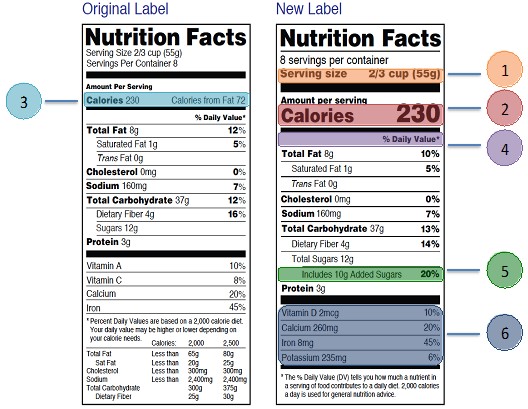
Dv on food labels
How to Understand and Use the Nutrition Facts Label | FDA - U.S. Food ... 5% DV or less of a nutrient per serving is considered low 20% DV or more of a nutrient per serving is considered high More often, choose foods that are: Higher in %DV for Dietary Fiber, Vitamin D,... How To Read Food Labels: Understanding the Basics - Instacart Food labels list Percent Daily Values (%DV) data to provide a helpful reference point. The %DV tells you what percentage of your daily recommended intake of a particular nutrient is contained within one serving of the product. Use this information to judge whether this product is providing you with appropriate amounts of certain nutrients. What Food Labels Tell You | Smokefree The % DV tells you the percentage of each nutrient in a single serving, in terms of the daily recommended amount. If you want to take in less of a nutrient such as fat or sodium, choose foods with a lower % DV—5 percent or less. If you want to take in more of a nutrient such as fiber, pick foods with a higher % DV—20 percent or more.
Dv on food labels. Nutrition Facts Label - IFT.org - Institute of Food Technologists The Nutrition Facts Label, also referred to as the Nutrition Facts Panel, on packaged food and beverage products is intended to help consumers make informed food choices that contribute to a healthy diet. The first Nutrition Facts Label regulations were published in 1993 and launched in 1994. FDA (US) Nutrition Label Rounding Rules - ReciPal These rules apply to all nutrients that have to show a percentage of the daily value that a serving of the product supplies. So they include all vitamins and minerals and everything in the main panel except trans fat, total sugars, and protein (% DV isn't required for protein, but it is allowed, and if you show it, it's rounded too): Food Labeling & Nutrition | FDA Food labeling is required for most prepared foods, such as breads, cereals, canned and frozen foods, snacks, desserts, drinks, etc. Nutrition labeling for raw produce (fruits and vegetables) and... Using a PDCAAS Value to Display %DV Protein on Your Supplements ... - ESHA The FDA only requires %DV for protein on labels intended for infants and children, or on products that make a protein claim: Protein. A %DV is required to be listed if a claim is made for protein, such as "high in protein." The %DV for protein must also be listed on the label if the product is intended for infants and children under 4 years ...
Nutrition Labelling and Claims - The Canadian Sugar Institute The DV for fibre increased from 25 g to 28 g (1). These values are based on a 2000-calorie reference diet and can be used to compare food products and make informed food choices. Sugars in the Ingredient List All pre-packaged foods require a List of Ingredients (2, 3). Understanding Food & Nutrition Labels - Mount Carmel Blog Food labels tell us more about the food we're buying and eating. These are some of the key terms you'll read on food labels and what they actually mean. ... The Percent Daily Value (DV) The % Daily Value (DV) is the percentage of the daily value of each nutrient your body needs that a serving of that food will provide. Daily Values are ... How to Read a Food Label: Tips and Advice | HealthNews %DV is listed on a food label to help you understand whether a food's serving size is high, medium or low in specific nutrients. %DV is represented as a percentage of the nutrient recommendations for a 2,000 calorie diet. How to Read a Food Label: Tips from a Registered Dietitian - Keck ... Learn how the information on food labels can help you manage your health and wellness goals. ... Tip 3: A higher percent of daily value is not always better. "I recommend looking at the percent of daily values (%DV) on the nutrition label because they can help us understand the impact nutrients have on our overall daily diet," McInerney ...
How to read nutrition labels - Roswell Park Comprehensive Cancer Center ... In this example label, 1 serving or ⅔ of a cup of this food provides 230 calories. If you consume two servings, the number of calories provided by the food you eat would be 460 calories. ... Percent Daily Value. The Daily Values (DV) are reference amounts that tell you if one serving of a food contains a little or a lot of that nutrient. A ... Added Sugars on the New Nutrition Facts Label | FDA - U.S. Food and ... Labels for foods and beverages with added sugars will list the number of grams and the percent Daily Value (%DV) for added sugars within the Nutrition Facts label. Having the word "includes" before... Why do nutrition labels list 0% vitamins? What exactly do the figures on nutrition labels mean? Explanation of the Percent Daily Value. The percent Daily Value (percent DV) is a measurement of how much a nutrient in a portion of food contributes to a daily diet. You can use the percent DV to see if a serving of food is high or low in a particular nutrient. How To Read Food and Beverage Labels - National Institute on Aging Or you can call the U.S. Department of Agriculture's Food and Nutrition Information Center at 301-504-5414. Understanding percent Daily Value (% DV) The percent Daily Value (% DV) tells how much a nutrient in a serving of the food or beverage contributes to a total daily 2,000-calorie diet.
The Basics of the Nutrition Facts Label - Academy of Nutrition and ... A food item with a 5% DV of fat provides 5% of the total fat that a person who needs 2,000 calories a day should eat. You may need more or less than 2,000 calories per day. This means that you may need more or less than 100% DV that is listed on the package for some nutrients. Low is 5% or less.
How to Read Food Labels: Your Complete Consumer Guide Details included on food labels are the nutritional composition of a food, as well as ingredients and their relative amounts. When relevant, they may also indicate important details about the food's quality, origin, processing, and method of preservation. With this information, the theory goes, you can make intentional decisions about what to buy.
Food Labeling. Percentages don't add up.. - Mayo Clinic Connect No, because the label (the %DV) does the math for you! It helps you interpret the nutrient numbers (grams, milligrams, or micrograms) by putting them all on the same scale for the day (0-100%DV). The %DV column doesn't add up vertically to 100%. Instead, the %DV is the percentage of the Daily Value for each nutrient in a serving of the food.
Reading Food Labels - What You Need to Know - Drugs.com This label tells you what a serving size is and how many servings are in the package. Other information shown includes the amount of calories, fat, carbohydrate, protein, vitamins and minerals found in the food. Begin reading food labels at the top, with the serving size and number of servings in the package.
FDA Nutrition Label Update: How to Read the New Food Label | U.S. News The FDA has revised its nutrition food labels for the first time in more than 20 years. Explore the changes and how to read these new labels. ... A food with a DV of 5% or less of a nutrient is ...
Vitamin D and Calcium: Information on Revised Labelling and Daily ... In 2016, Health Canada announced several updates to the nutrition facts table and list of ingredients on food labels. Among the listed modifications were new daily values (DVs) for vitamin D and calcium in the nutrition facts table to align with current recommendations: 1 The DV for vitamin D increased from 5 mcg (200 IU) to 20 mcg (800 IU).
Home | Dietary Supplement Label Database (DSLD) | NIH Office of Dietary ... Use the chart to learn how many products of each supplement form are in the DSLD. To search by a specific form, click on the supplement form below. 0 10,000 20,000 30,000 40,000 50,000 Number of Labels Capsules Tablets and Pills Powders Liquids Softgel Capsules Other (e.g. tea bag) Gummies and Jellies Lozenges Unknown Bars.
The Lows and Highs of Percent Daily Value on the Label 5% DV or less of a nutrient per serving is considered low. 20% DV or more of a nutrient per serving is considered high. More often, choose foods that are: Higher in dietary fiber, vitamin D,...
Understand Food Labels - UF/IFAS Extension Marion County Daily Value Percentage (% DV) and Footnote (in blue): As noted in the chocolate bar's footnote "The % Daily Value (%DV) tells you how much a nutrient in a serving of food contributes to a daily diet. 2.000 calories a day is used for general nutrition advice." This simply means that the nutrient section is calculated based on a 2,000-calorie diet.
Daily Value on the New Nutrition and Supplement Facts Labels The Nutrition Facts label must list total fat, saturated fat, trans fat, cholesterol, sodium, total carbohydrate, dietary fiber, total sugars, added sugars, protein, and certain vitamins and...
What Food Labels Tell You | Smokefree The % DV tells you the percentage of each nutrient in a single serving, in terms of the daily recommended amount. If you want to take in less of a nutrient such as fat or sodium, choose foods with a lower % DV—5 percent or less. If you want to take in more of a nutrient such as fiber, pick foods with a higher % DV—20 percent or more.
How To Read Food Labels: Understanding the Basics - Instacart Food labels list Percent Daily Values (%DV) data to provide a helpful reference point. The %DV tells you what percentage of your daily recommended intake of a particular nutrient is contained within one serving of the product. Use this information to judge whether this product is providing you with appropriate amounts of certain nutrients.
How to Understand and Use the Nutrition Facts Label | FDA - U.S. Food ... 5% DV or less of a nutrient per serving is considered low 20% DV or more of a nutrient per serving is considered high More often, choose foods that are: Higher in %DV for Dietary Fiber, Vitamin D,...
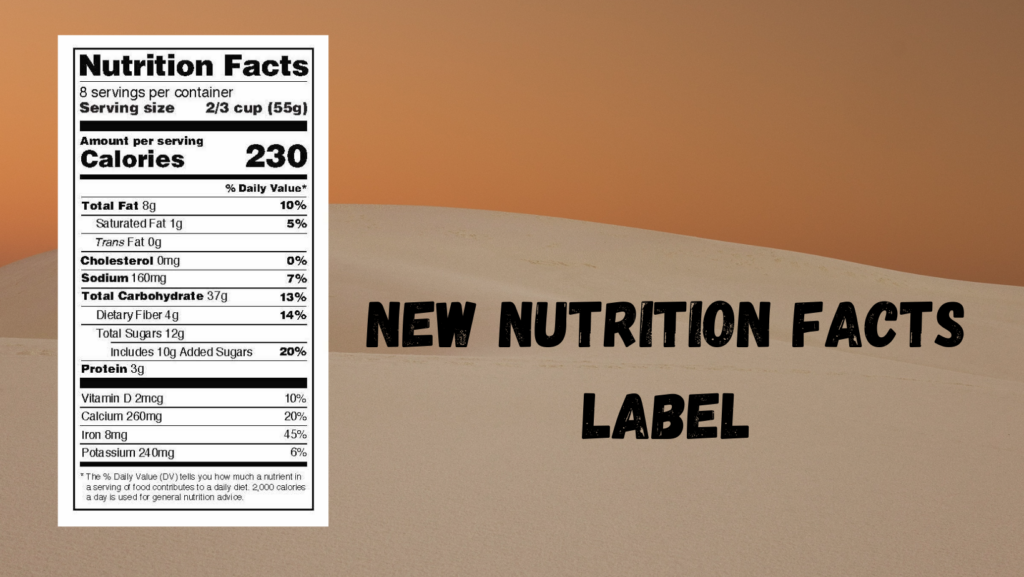

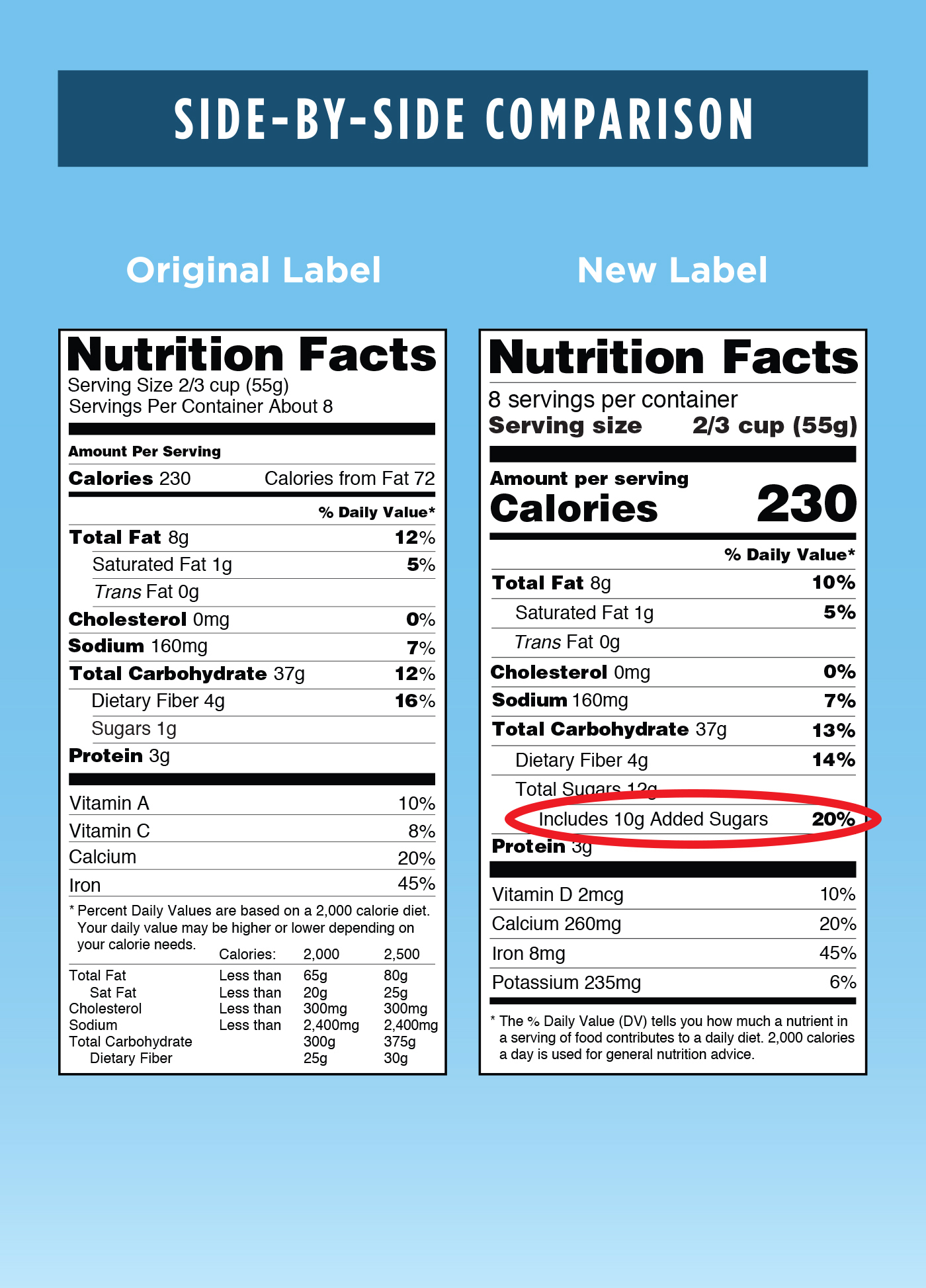

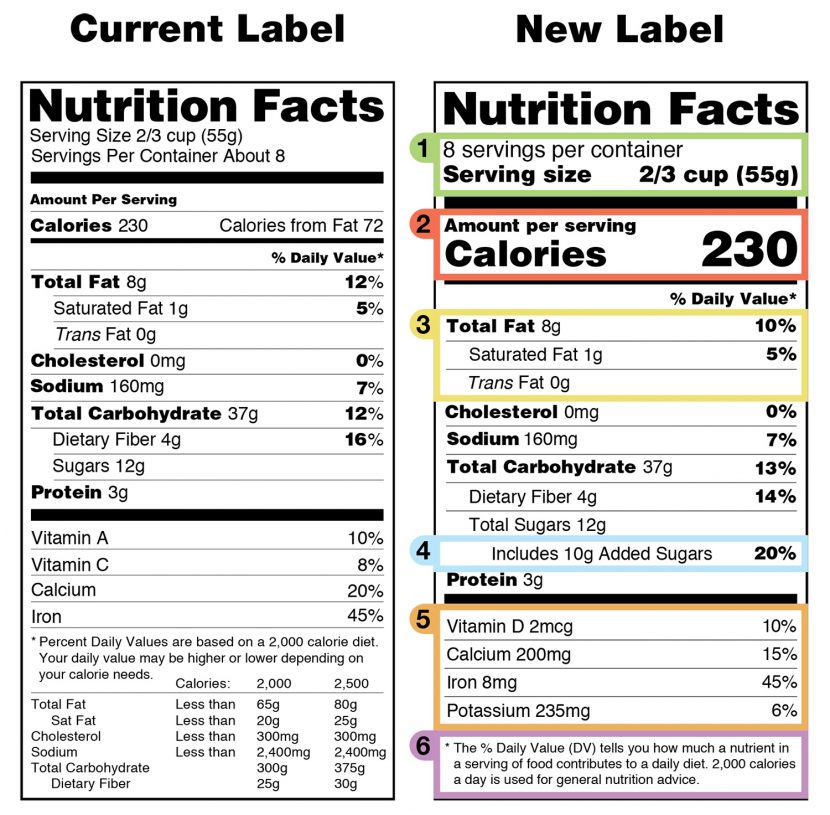

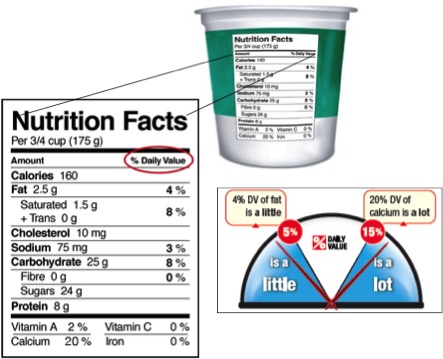

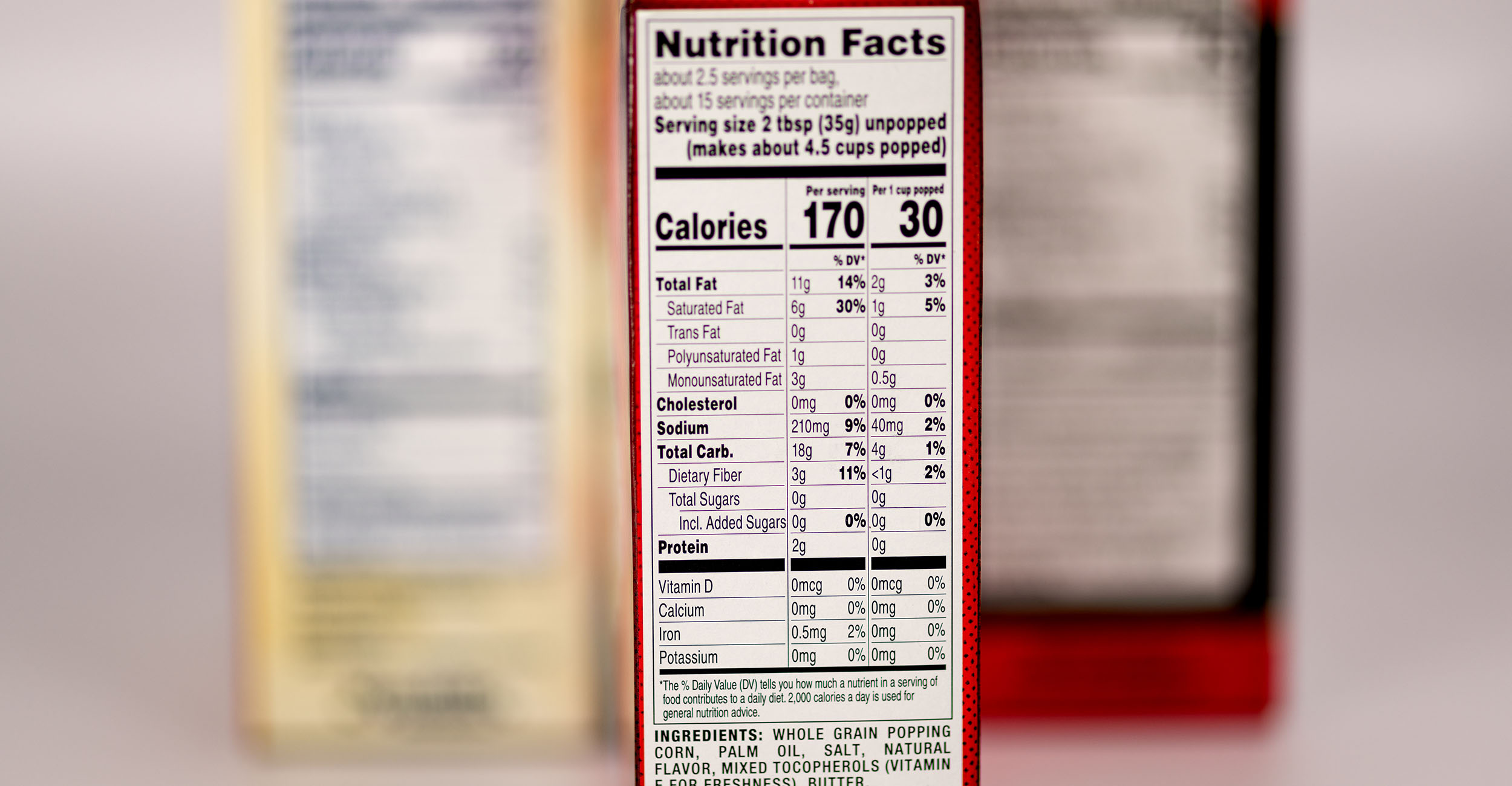



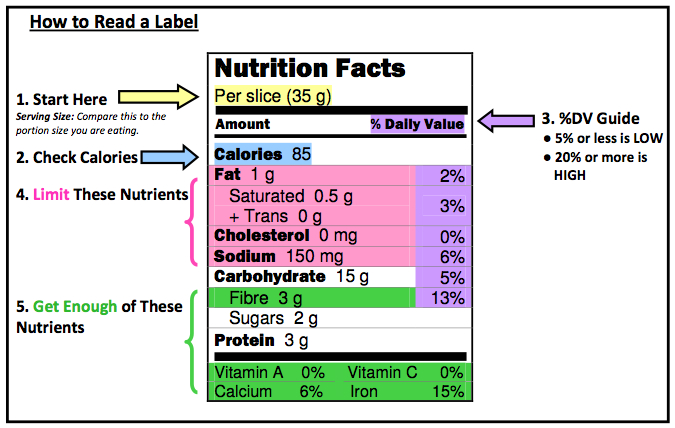
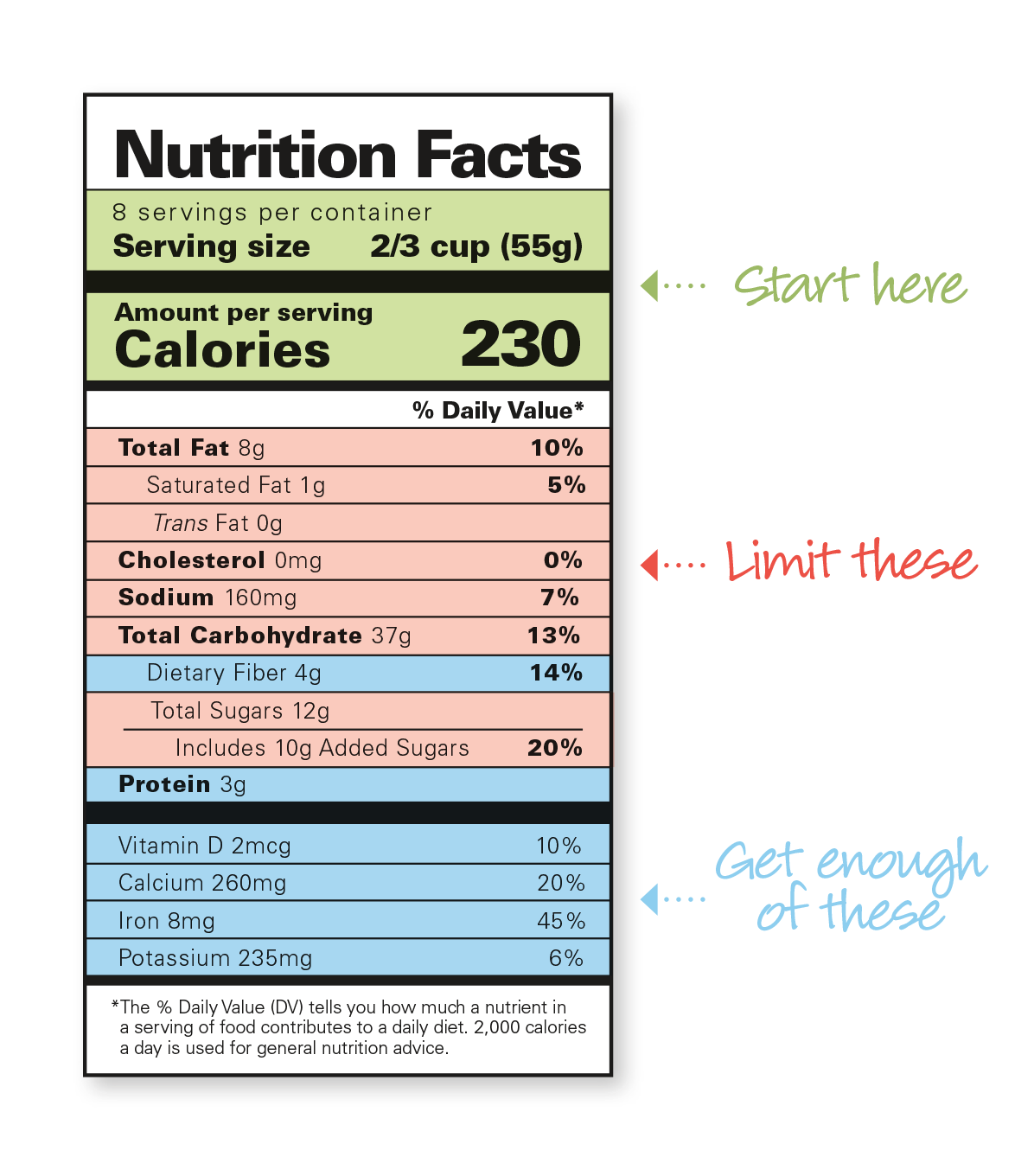
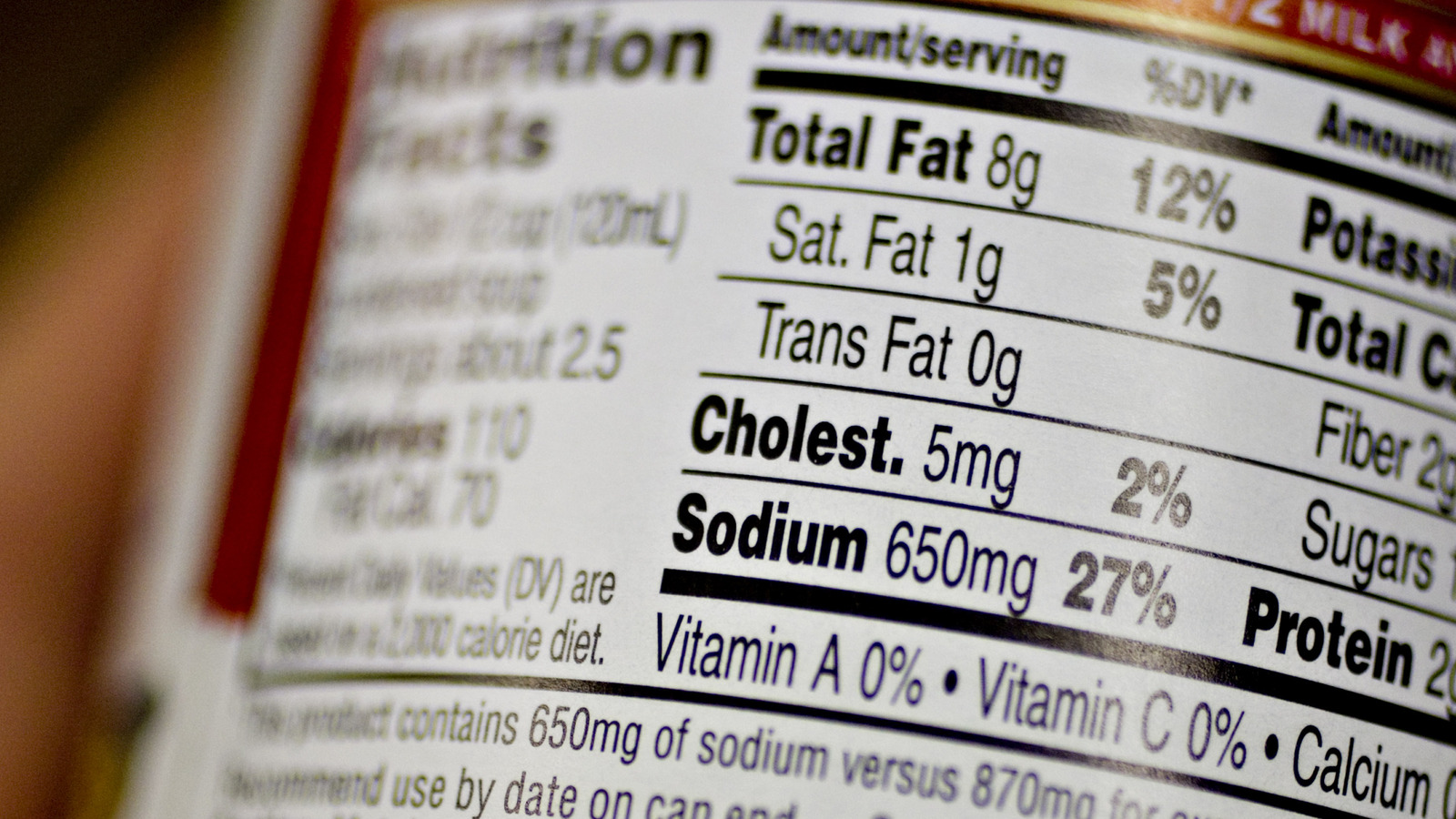
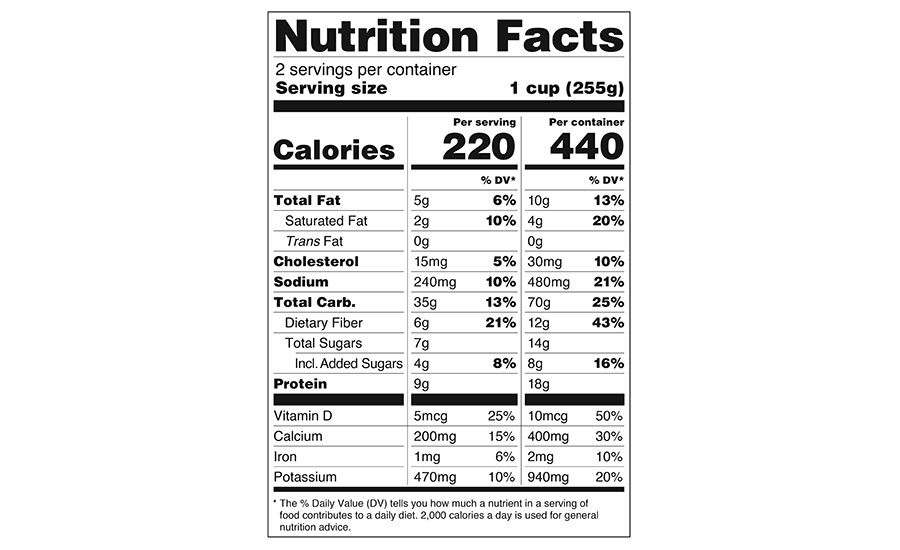
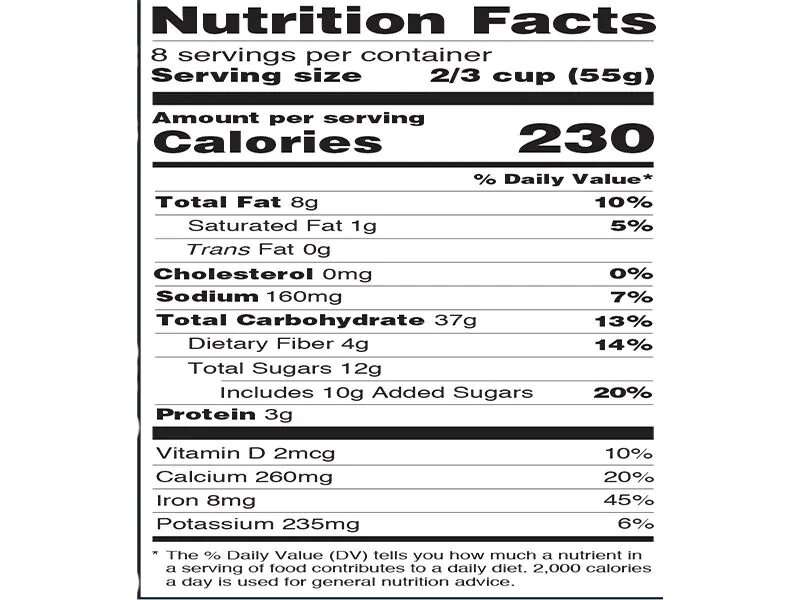

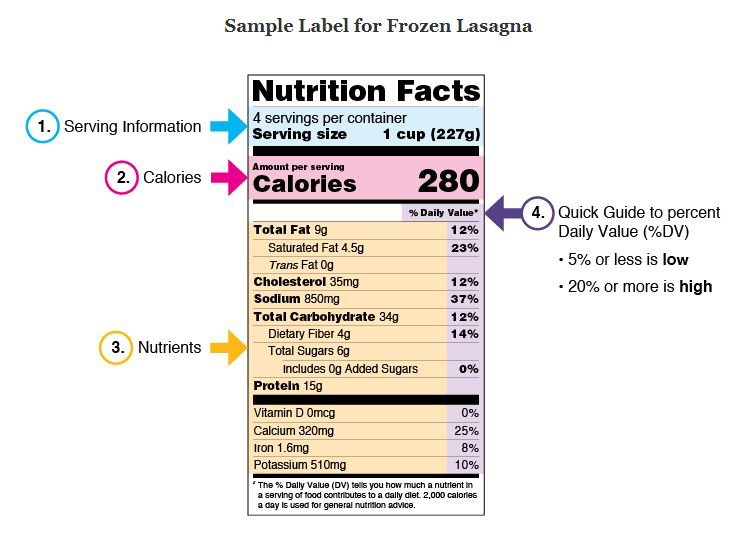

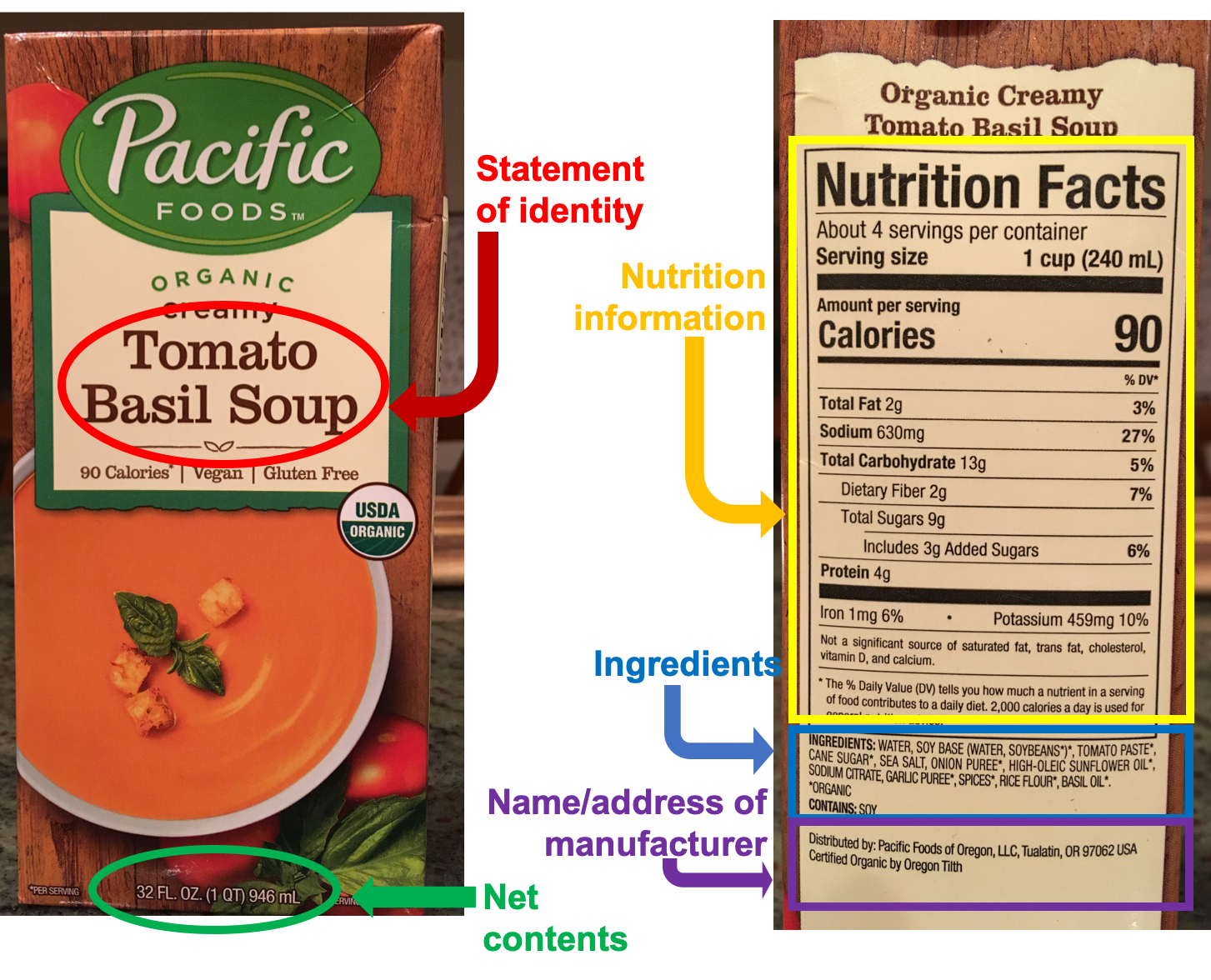



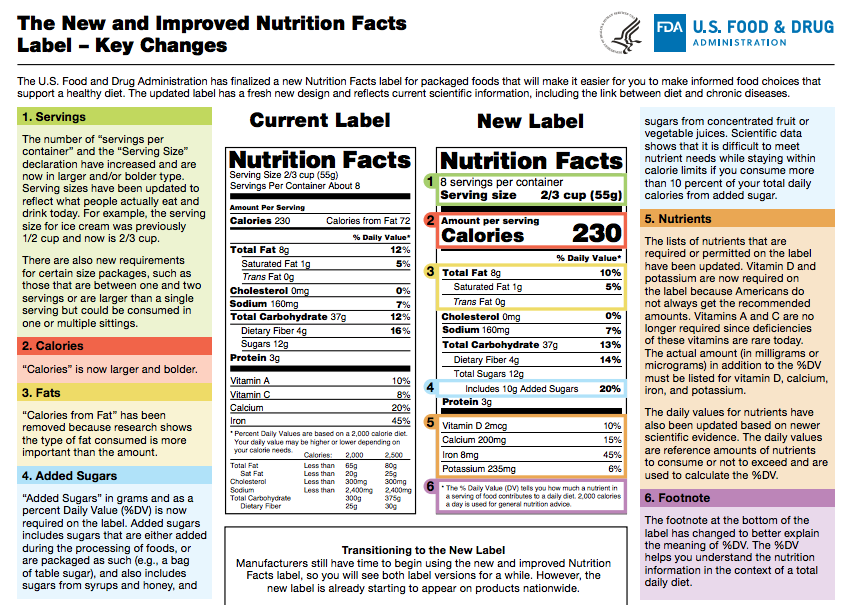

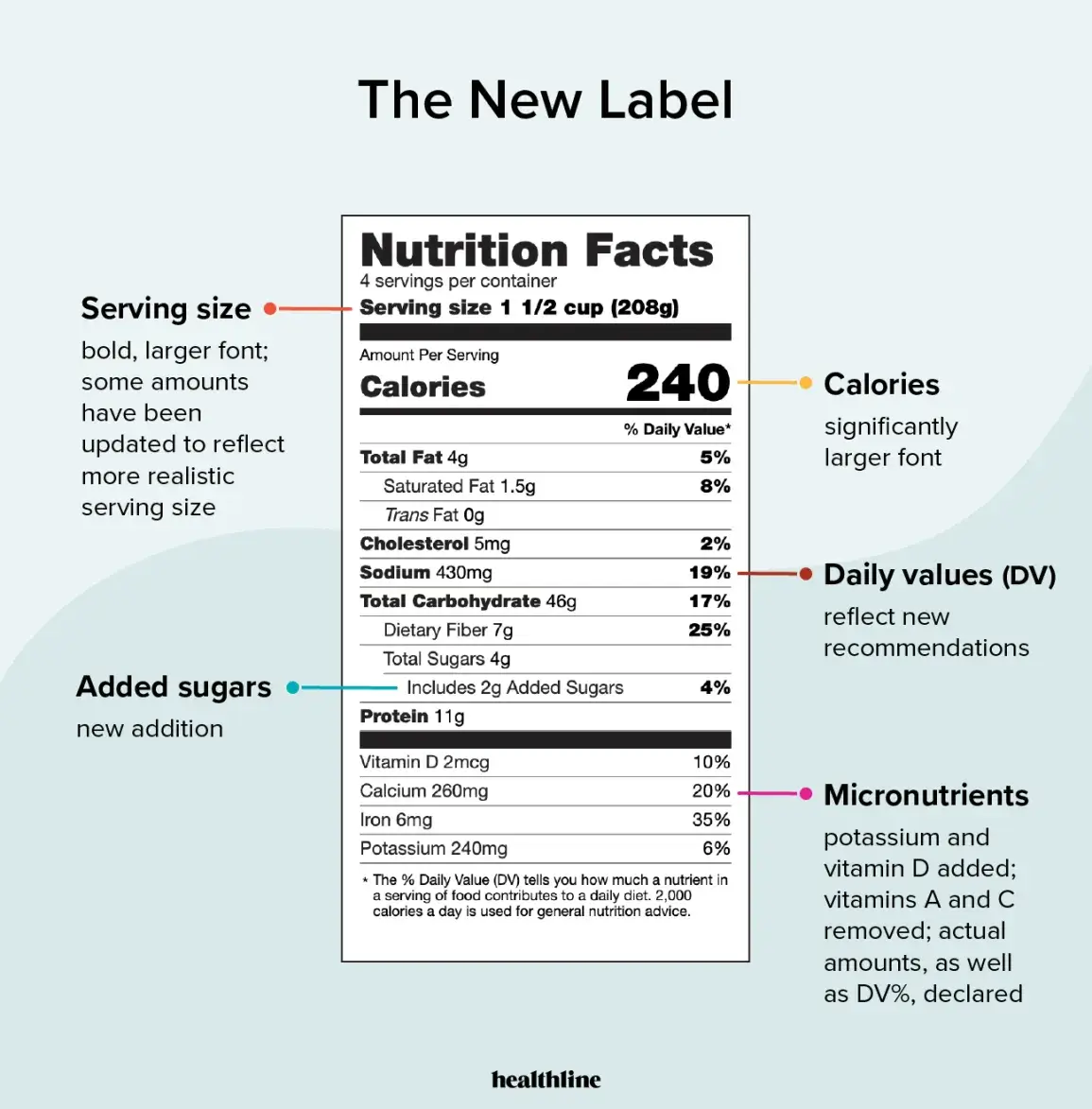
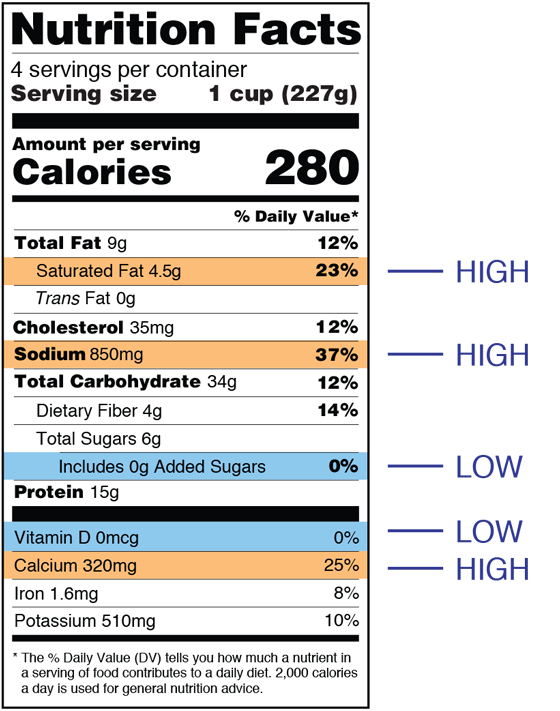

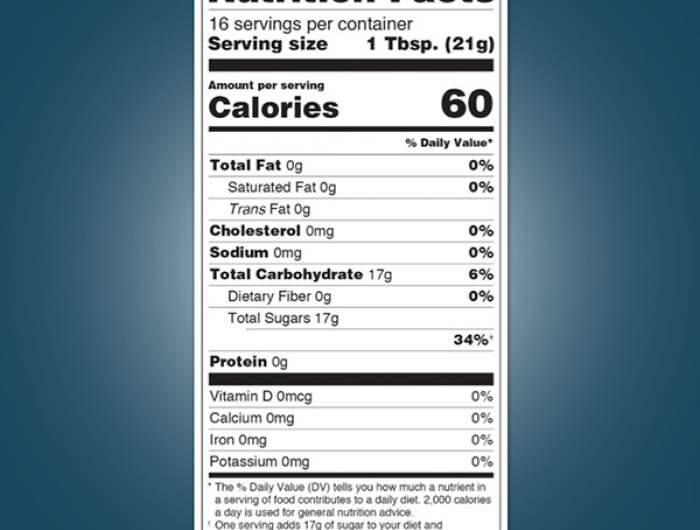

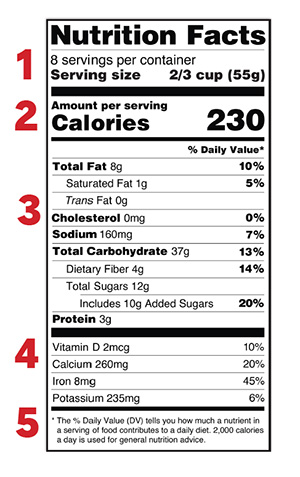
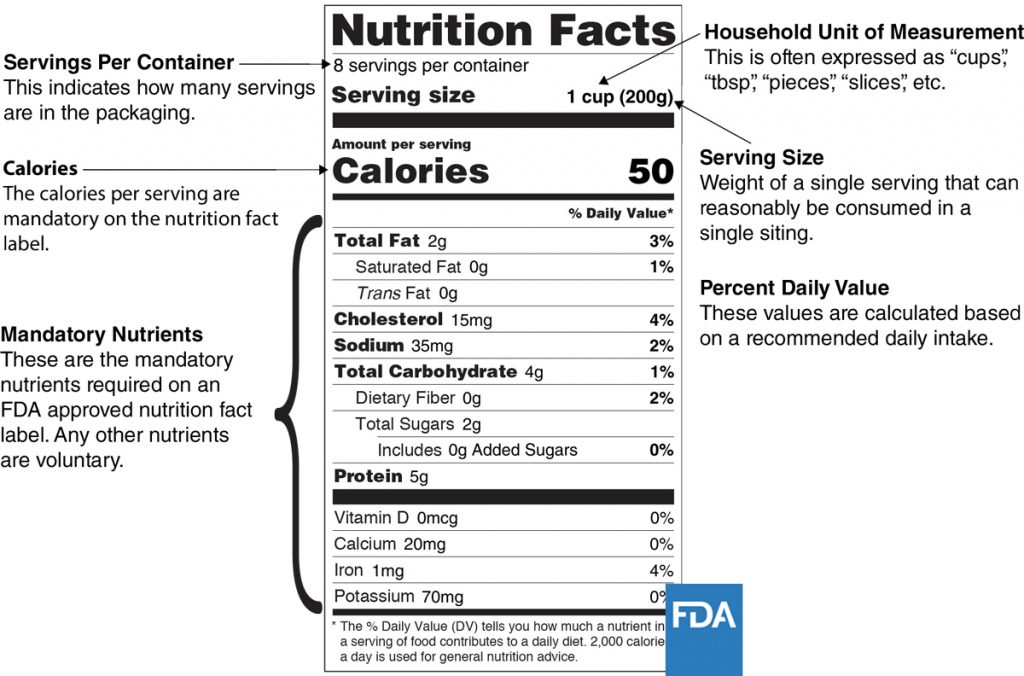
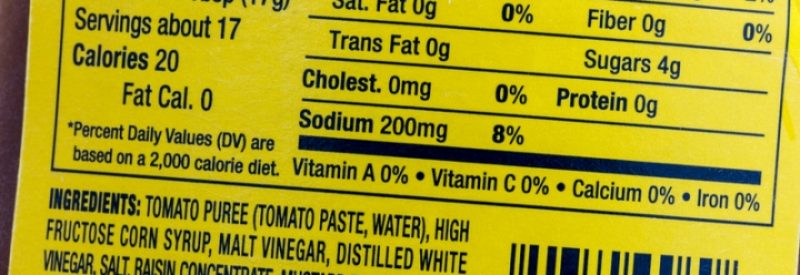

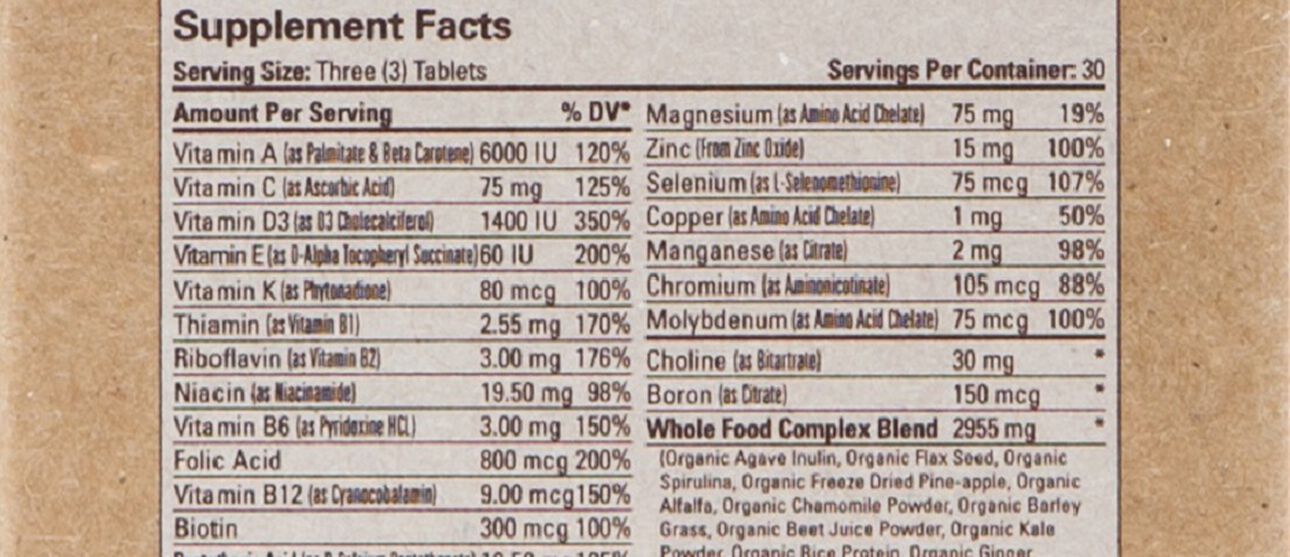


Post a Comment for "42 dv on food labels"